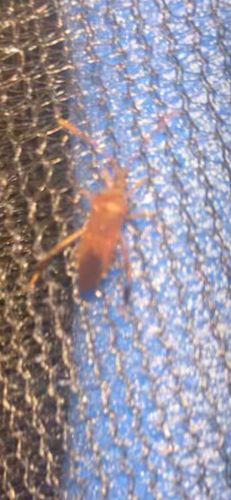Assassin Bug (likely a nymph or a small species)
Scientific Name: Reduviidae (family)
Order & Family: Order: Hemiptera, Family: Reduviidae
Size: Most assassin bugs range from 12 mm to 40 mm (0.5 to 1.6 inches) in length, though smaller nymphs or species can be a few millimeters.

Natural Habitat
Assassin bugs are found in a variety of habitats including gardens, agricultural fields, forests, and some species can even be found indoors. They often hide in foliage, under rocks, or in other concealed locations to ambush prey.
Diet & Feeding
Predatory; they feed on a wide variety of other insects and arthropods. They use their strong, piercing-sucking mouthparts (proboscis) to inject a potent saliva that paralyzes prey and liquefies their internal contents, which the assassin bug then sucks out.
Behavior Patterns
Mostly solitary insects, many species are ambush predators, waiting for unsuspecting prey to come close. Some species are active hunters. They undergo incomplete metamorphosis (egg, nymph, adult). Many species are nocturnal, but some are active during the day. They can inflict a painful bite if handled or provoked, though they generally prefer to flee.
Risks & Benefits
Potential Risks: Their bite can be painful, similar to a bee or wasp sting, and can cause localized swelling and irritation. Some species, particularly the 'kissing bugs' (subfamily Triatominae), are vectors for Chagas disease in certain parts of the world, though the bug in the image does not strongly resemble a typical 'kissing bug'. Potential Benefits: Assassin bugs are beneficial insects as they are natural predators of many agricultural pests, helping to control insect populations without the need for chemical pesticides.
Identified on: 9/27/2025